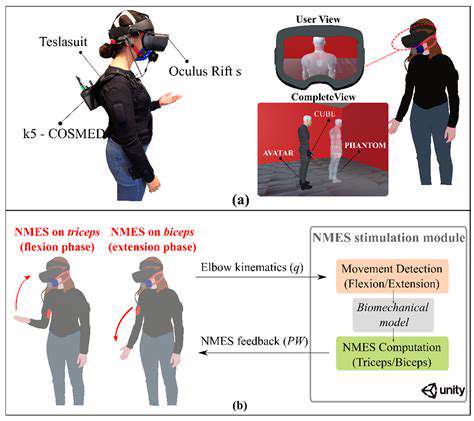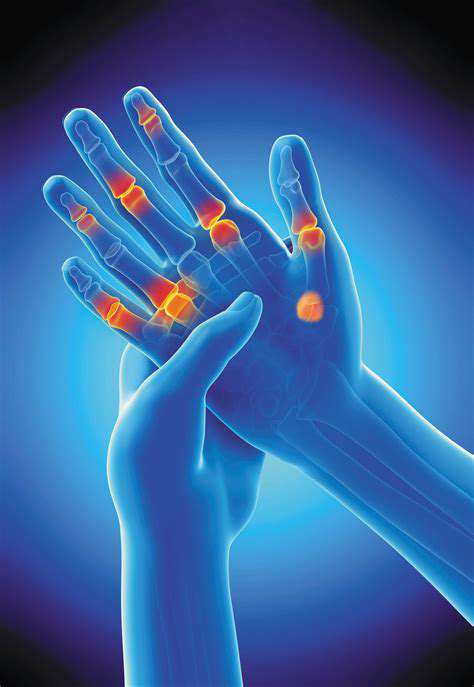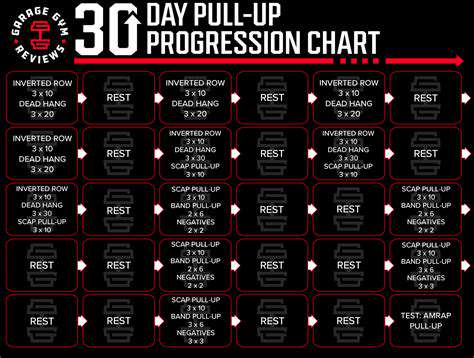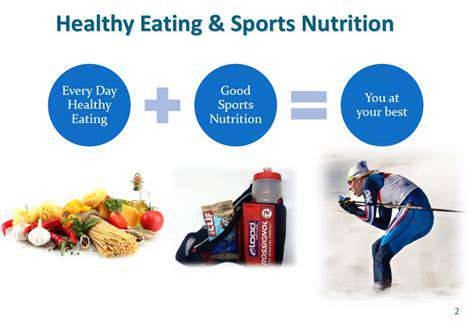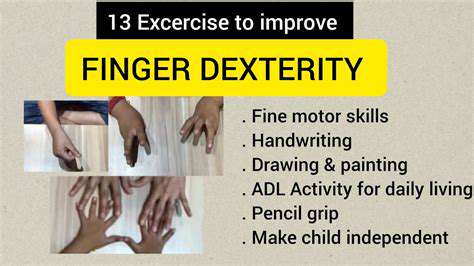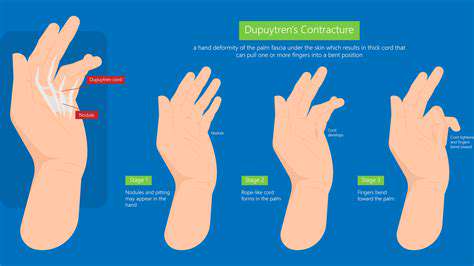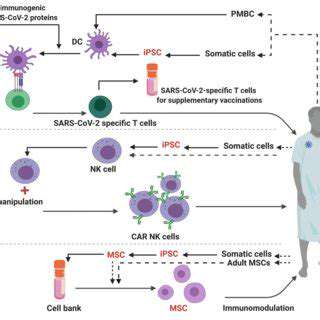How to Safely Increase Hand Strength for Athletes
Essential Hand Strengthening Exercises
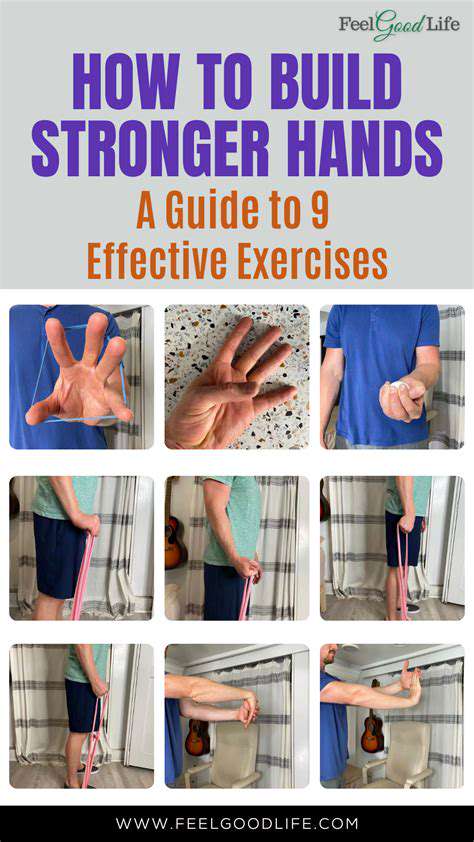
Warm-up Exercises
Before diving into any hand strengthening exercises, it's crucial to prepare your hands and wrists for the activity. A proper warm-up helps prevent injuries and ensures a more effective workout. Light movements, like gently circling your wrists and fingers, can increase blood flow to the muscles, preparing them for the resistance exercises that follow. This initial step is vital for optimal performance and injury prevention.
Simple stretches, such as extending and flexing your fingers and wrists, also contribute significantly to a proper warm-up. These movements help to lubricate the joints and improve flexibility, which will make the subsequent exercises less strenuous and more enjoyable. Remember to maintain a controlled and gentle pace to avoid any sudden movements that could lead to injury.
Finger Flexion and Extension
Strengthening your finger flexors and extensors is fundamental for everyday tasks like gripping and typing. Exercises focusing on these muscles can significantly improve your hand strength and dexterity. One effective method involves using resistance bands or light weights to oppose the natural movement of your fingers. This controlled resistance helps build strength gradually and safely.
Another approach involves using your non-dominant hand to resist the movement of your dominant hand's fingers. This creates a controlled struggle that effectively targets the specific muscles needed for strong grip and dexterity. Performing these exercises regularly will enhance your ability to perform daily tasks with ease and precision.
Grip Strengthening Exercises
Developing a strong grip is essential for various activities, from opening jars to playing musical instruments. Several exercises can target and build grip strength. Using a hand gripper, squeezing a stress ball, or even holding a weighted object can all contribute to strengthening the muscles in your hands and forearms. Consistency in these exercises is crucial to see noticeable improvements over time.
Gradually increasing the resistance of the objects you're gripping is key to progressive overload. This principle allows your muscles to adapt and grow stronger over time. Start with lighter weights or resistance and progressively increase the challenge as your strength improves.
Wrist Strengthening Exercises
Wrist strength is crucial for tasks requiring precision and control. Exercises that focus on wrist flexion, extension, and radial/ulnar deviation are vital for overall hand function. Using light weights or resistance bands to perform these movements can effectively target the wrist muscles, leading to noticeable improvements in strength and stability.
Another effective method involves using a dumbbell or weight and performing wrist curls and extensions. This exercise targets the specific muscles in your wrists, improving stability and reducing the risk of injury while performing tasks involving the wrists.
Progressive Overload and Rest
Progressive overload is a fundamental principle in any strength training program, including hand exercises. Gradually increasing the resistance, repetitions, or sets over time is crucial for continuous muscle growth and strength improvement. This gradual progression ensures your muscles are constantly challenged and adapt to the new demands.
Adequate rest is equally important. Allowing your muscles time to recover between workouts is essential for preventing injuries and maximizing results. Overtraining can hinder progress, so it's vital to listen to your body and incorporate rest days into your routine.
Workplace culture isn't simply a trendy phrase; it's the complex interplay of shared values, beliefs, behaviors, and attitudes that shape the daily experiences of employees. It's the invisible glue that binds a team together, fostering a sense of belonging and influencing everything from productivity and innovation to employee retention and overall job satisfaction. Understanding its multifaceted nature is crucial for creating a positive and thriving work environment.
Monitoring Progress and Adapting Your Routine
Understanding Your Baseline
Before you start any hand-strengthening program, it's crucial to understand your current baseline strength. This involves a thorough assessment of your grip strength and the range of motion in your hands and wrists. A simple test, like squeezing a hand dynamometer, can provide a starting point for measuring your progress. Keeping a log of your results will help you track improvements over time and identify any plateaus or potential issues.
Accurate baseline data is essential for tailoring an effective routine and ensuring you're progressively overloading your muscles. This initial evaluation will help you understand the specific areas where you need to focus your efforts and adjust your training as your strength increases.
Choosing Appropriate Exercises
Selecting the right exercises is critical to a safe and effective hand-strengthening routine. Avoid exercises that place excessive stress on your joints or increase the risk of injury. Focus on exercises that target the specific muscles responsible for grip strength, such as those in your fingers, palms, and forearms. Explore various options like squeezing stress balls, using resistance bands for hand exercises, and utilizing hand grippers of varying resistance levels.
Gradual Progression is Key
A gradual increase in the intensity and duration of your hand exercises is vital for safe and sustainable progress. Rushing the process can lead to injuries and setbacks. Start with lighter weights or resistance levels and gradually increase the challenge as your strength improves. Listen to your body and don't push through pain. Adjust your routine as needed to accommodate any discomfort or limitations.
Rest and Recovery for Optimal Results
Adequate rest and recovery are crucial components of any hand-strengthening program. Allow your muscles time to repair and rebuild after each workout. Rest days allow your body to recover, preventing overtraining and potential injuries. Pay attention to any signs of fatigue or pain, and adjust your routine accordingly. Resting between sets and exercises is just as important as the exercise itself.
Incorporating Variety into Your Routine
Maintaining a consistent routine is important, but introducing variety keeps things interesting and prevents plateaus. Switching between different exercises and tools will engage different muscle groups and maximize the effectiveness of your training. Try using different types of hand grippers, resistance bands, or even simple objects like stress balls for variation. This variation will keep your training interesting and prevent boredom, which can lead to decreased motivation.
Monitoring and Adjusting Your Routine
Regularly monitoring your progress is essential to ensure that your routine remains effective and safe. Track your results, noting any improvements or plateaus. Pay attention to any changes in your hand or wrist health. If you experience persistent pain or discomfort, it's crucial to adjust your routine or consult a healthcare professional. By continuously monitoring your progress and adapting your routine, you can optimize your hand-strengthening program for maximum results and minimize risks.

